A Case Study from the Past: "The RGC-5 vs. the 661W Cell Line: Similarities, Differences and Contradictions-Are They Really the Same?"
- PMID: 37762103
- PMCID: PMC10531351
- DOI: 10.3390/ijms241813801
A Case Study from the Past: "The RGC-5 vs. the 661W Cell Line: Similarities, Differences and Contradictions-Are They Really the Same?"
Abstract
In the pursuit of identifying the underlying pathways of ocular diseases, the use of cell lines such as (retinal ganglion cell-5) RGC-5 and 661W became a valuable tool, including pathologies like retinal degeneration and glaucoma. In 2001, the establishment of the RGC-5 cell line marked a significant breakthrough in glaucoma research. Over time, however, concerns arose about the true nature of RGC-5 cells, with conflicting findings in the literature regarding their identity as retinal ganglion cells or photoreceptor-like cells. This study aimed to address the controversy surrounding the RGC-5 cell line's origin and properties by comparing it with the 661W cell line, a known cone photoreceptor model. Both cell lines were differentiated according to two prior published redifferentiation protocols under the same conditions using 500 nM of trichostatin A (TSA) and investigated for their morphological and neuronal marker properties. The results demonstrated that both cell lines are murine, and they exhibited distinct morphological and neuronal marker properties. Notably, the RGC-5 cells showed higher expression of the neuronal marker β-III tubulin and increased Thy-1-mRNA compared with the 661W cells, providing evidence of their different properties. The findings emphasize the importance of verifying the authenticity of cell lines used in ocular research and highlight the risks of contamination and altered cell properties.
Keywords: RGC-5 & 661W; differentiation protocol; glaucoma.
Conflict of interest statement
The authors declare no conflict of interest.
Figures




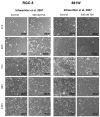
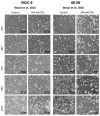
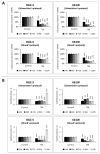

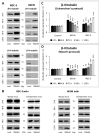
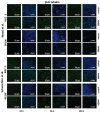
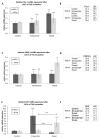
Similar articles
-
661W is a retinal ganglion precursor-like cell line in which glaucoma-associated optineurin mutants induce cell death selectively.Sci Rep. 2017 Dec 4;7(1):16855. doi: 10.1038/s41598-017-17241-0. Sci Rep. 2017. PMID: 29203899 Free PMC article.
-
Induction of Neuronal Morphology in the 661W Cone Photoreceptor Cell Line with Staurosporine.PLoS One. 2015 Dec 18;10(12):e0145270. doi: 10.1371/journal.pone.0145270. eCollection 2015. PLoS One. 2015. PMID: 26684837 Free PMC article.
-
A comparison of differentiation protocols for RGC-5 cells.Invest Ophthalmol Vis Sci. 2010 Jul;51(7):3774-83. doi: 10.1167/iovs.09-4305. Epub 2010 Feb 24. Invest Ophthalmol Vis Sci. 2010. PMID: 20181845
-
A forensic path to RGC-5 cell line identification: lessons learned.Invest Ophthalmol Vis Sci. 2013 Aug 23;54(8):5712-9. doi: 10.1167/iovs.13-12085. Invest Ophthalmol Vis Sci. 2013. PMID: 23975727 Review.
-
What is the nature of the RGC-5 cell line?Adv Exp Med Biol. 2014;801:145-54. doi: 10.1007/978-1-4614-3209-8_19. Adv Exp Med Biol. 2014. PMID: 24664692 Review.
Cited by
-
Protocol for the purification and culture of primary retinal ganglion cells and development of common pathological models.J Mol Histol. 2025 Aug 8;56(4):260. doi: 10.1007/s10735-025-10536-x. J Mol Histol. 2025. PMID: 40779178
-
Retinal Protection of New Nutraceutical Formulation.Pharmaceutics. 2025 Jan 7;17(1):73. doi: 10.3390/pharmaceutics17010073. Pharmaceutics. 2025. PMID: 39861721 Free PMC article.
-
Stress Granule Induction in Rat Retinas Damaged by Constant LED Light.Invest Ophthalmol Vis Sci. 2025 Jan 2;66(1):38. doi: 10.1167/iovs.66.1.38. Invest Ophthalmol Vis Sci. 2025. PMID: 39813056 Free PMC article.
-
A review of the 661W cell line as a tool to facilitate treatment development for retinal diseases.Cell Biosci. 2025 Apr 1;15(1):41. doi: 10.1186/s13578-025-01381-2. Cell Biosci. 2025. PMID: 40170180 Free PMC article. Review.
References
-
- United States Environmental Protection Agency . Directive to Prioritize Efforts to Reduce Animal Testing. United States Environmental Protection Agency; Washington, DC, USA: 2019.
-
- Agarwal N., Agarwal R., Kumar D.M., Ondricek A., Clark A.F., Wordinger R.J., Pang I.H. Comparison of expression profile of neurotrophins and their receptors in primary and transformed rat retinal ganglion cells. Mol. Vis. 2007;13:1311–1318. - PubMed
MeSH terms
Substances
LinkOut - more resources
Full Text Sources
Medical
Research Materials
Miscellaneous

